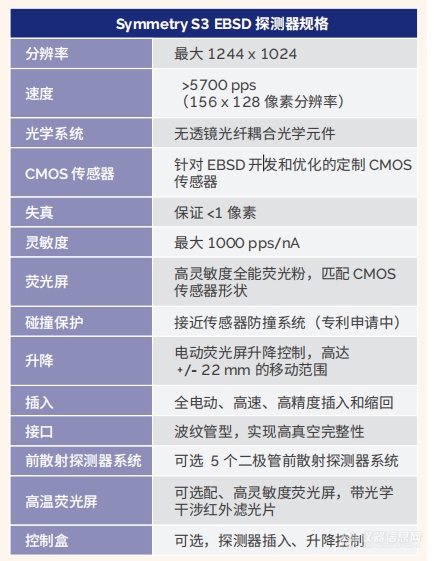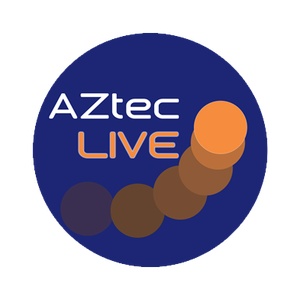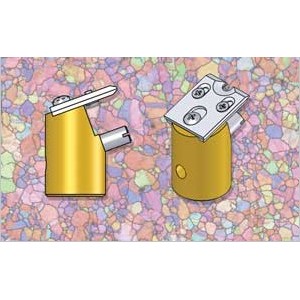产地类别: 进口
CCD相机分辨率: 1244×1024
极限速度: 870Hz
空间分辨率: 2nm
角分辨率: 优于0.1°
 创新点
创新点
Symmetry S3 电子背散射衍射探测器是牛津仪器全能型 Symmetry 产品系列中的第三代产品。Symmetry S3 将高速分析(>5700 花样/ 秒)与各种先进的功能相结合,确保更加优异的性能,满足科研领域的各种需求。Symmetry S3 探测器能从各种类型的样品中,采集到出色的结果。它具有无透镜光纤耦合相机系统,可在任何分析条件下,实现高灵敏度,包括束流敏感材料的分析及常规样品的高速表征。高像素分辨率与有保证的亚像素花样失真水平相结合,使 S3 成为应变深入分析和高精度 EBSD 工作的理想选择。独有的软件控制的探测器倾转功能,确保了对各种尺寸和形状的样品,都能在优化的几何位置进行数据采集。新一代高温荧光屏,采用红外光学滤镜技术,能有效过滤高温引起的红外背底,保留花样信号,满足原位加热实验的需求。
看了电子背散射衍射系统(EBSD)的用户又看了
利用全能型 EBSD 探测器进行快速和多功能分析
Symmetry S3 电子背散射衍射(EBSD)探测器是全能型 Symmetry 产品系列中的第三代探测器。S3 将高速分析(> 5700 个花样每秒(pps))与先进功能相结合,确保更加优异 的性能,满足各领域内科研的需要。 Symmetry S3 是一款旨在从各种类型的样品中,提供出色结果 的 EBSD 探测器。无透镜光纤耦合相机系统,可在所有分析条件 下,实现出色的灵敏度,从束流敏感材料的分析到常规样品的高 速表征。高像素分辨率与有保证的亚像素花样失真水平相结合, 使 S3 成为应变深入分析和高精度 EBSD 工作的理想选择,而软 件控制的探测器倾转功能,确保了对每种尺寸和形状的样品,都 能在优化的几何位置进行采集。
提升 EBSD 硬件能力:尽享高速及高灵敏性优势
6 种不同的相机模式,灵活应对多种日常及高难度分析的要求
高达 1244 x 1024 像素的图像分辨率
采集速度 >5700 pps,分辨率为 156 x 128 像素
无镜头光纤耦合相机系统,实现高灵敏度
保证高精度 EBSD 工作(包括 HR-EBSD)的亚像素失真
软件控制的探测器倾转,确保每个样品处于理想的几何设置
接近传感器系统(正在申请专利),可防止碰撞并尽可能减少 停机时间
可选集成 5 个二极管的前散射探测器 (FSD)成像系统
实现超高速分析:花样质量同样出色
Symmetry S3 的超高分析速度可在 60 秒内,根据国际标准进 行晶粒尺寸表征。在最大速度(156 x 128 像素)下,基于出色 的花样分辨率和光纤光学系统实现的高灵敏度,即使快速分析也 能保证数据质量及 SEM 的分辨率。
力求多功能性:完美表征所有样品
Symmetry S3 探测器的设计适合对样品进行全方位的分析。其 软件控制荧光屏升降功能,确保探测器可以安全地定位到每个 样品和任何测量的理想几何位置,包括需要进行大面积拼接或 进行透射菊池衍射(TKD)的样品。
高达 +/- 22 mm 电动升降移动
自动校准确保在任何几何位置上都能完美标定
接近传感器系统在潜在碰撞发生之前检测并预防——节省资 金和停机时间
Symmetry S3 的百万像素分辨率和保证仅亚像素级失真,使其 成为高精度 EBSD 的理想探测器
经过 HR-EBSD 研究验证过的性能
高精度标定模式(已申请专利),实时定位精度优于 0.01°
扩展更多应用需要:叠加多种信号于一体
5 个可选的前散射探测器(FSD) 可提供快速灵活的样品成像
下部 3 个二极管,用于晶体学取向衬度和形貌衬度成像(或 采集 TKD 的暗场像),可以合成伪彩色图像
上部 2 个用于原子序数 Z 衬度成像的二极管
| Symmetry S3 EBSD 探测器规格 | |
| 分辨率 | 最大 1244 x 1024 |
| 速度 | >5700 pps (156 x 128 像素分辨率) |
| 光学系统 | 无透镜光纤耦合光学元件 |
| CMOS 传感器 | 针对 EBSD 开发和优化的定制 CMOS 传感器 |
| 失真 | 保证 <1 像素 |
| 灵敏度 | 最大 1000 pps/nA |
| 荧光屏 | 高灵敏度全能荧光粉,匹配 CMOS 传感器形状 |
| 碰撞保护 | 接近传感器防撞系统(专利申请中) |
| 升降 | 电动荧光屏升降控制,高达 +/- 22 mm 的移动范围 |
| 插入 | 全电动、高速、高精度插入和缩回 |
| 接口 | 波纹管型,实现高真空完整性 |
| 前散射探测器系统 | 可选 5 个二极管前散射探测器系统 |
| 高温荧光屏 | 可选配、高灵敏度荧光屏,带光学 干涉红外滤光片 |
| 控制盒 | 可选,探测器插入、升降控制 |
推荐耗材
TKD(t-EBSD)样品台EBSD专用样品台 夹铝层双面碳导电胶带8mm×20m
双面铜导电胶带12.7mm×16.5m SEM扫描电镜钉形样品台存储盒可放14枚
SEM及能谱多功能标样8mm×32mm Co单质定量优化能谱标样


保修期: 详询工程师
是否可延长保修期: 是
现场技术咨询: 有
免费培训: 详询工程师
免费仪器保养: 详询工程师
保内维修承诺: 详询工程师
报修承诺: 详询工程师

牛津仪器Azteclive能谱实时元素成像系统
型号:Azteclive 面议
牛津仪器INCAWave波谱仪
型号:WDS 135万
牛津仪器TKD样品座
型号:TKD 1 - 5万
牛津仪器Ultim Extreme无窗超级能谱
型号:Ultim Extreme 20万 - 30万牛津仪器 CMOS EBSD 电子背散射衍射仪 牛津仪器Symmetry探测器 / 牛津仪器C-Swift探测器 / 牛津仪器C-Nano探测器
牛津仪器EBSD系统Symmetry的工作原理介绍
EBSD系统Symmetry的使用方法?
牛津仪器Symmetry多少钱一台?
EBSD系统Symmetry可以检测什么?
EBSD系统Symmetry使用的注意事项?
牛津仪器Symmetry的说明书有吗?
牛津仪器EBSD系统Symmetry的操作规程有吗?
牛津仪器EBSD系统Symmetry报价含票含运吗?
牛津仪器Symmetry有现货吗?
最多添加5台
